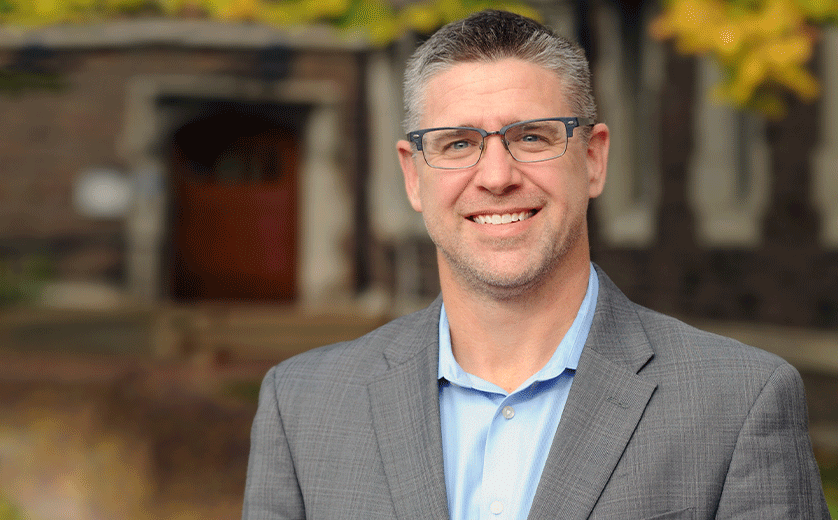Does it matter whether pain-management physicians believe in climate change? Joe Steensma thinks so.
Steensma, a professor of practice at the Brown School, co-authored two recent studies inspired by students in a class he teaches called “Climate Change and Public Health.” The idea to focus on pain management came from Alexandra Fogarty, a fellow in physiatry at the Washington University School of Medicine who spoke to the class on the subject. Like other fields, the practice of medicine has wasteful ways, some of it invisible and some recognizable. She gave an example of a fairly common practice, epidural injections for pain, that can be especially wasteful.
After her presentation, some members of the class expressed interest in helping quantify this issue as their final project for the course, focusing on epidural injections as a microcosm of a broader issue.
Steensma, Fogarty, and others, including students Annalee Wilson, Maya Godambe, and Nidhi Shinde, came up with a method to estimate the carbon footprint of epidurals and other medical procedures. “By estimating the carbon footprint, we can start to put actual metrics to how certain procedures contribute to greenhouse, gas emissions,” Steensma said. “There’s a principle in business: ‘That which gets measured, gets done.’ We believe by simply giving the industry a way to measure their carbon footprint, we could help them understand not just their contributions to climate change, but force them to focus on carbon reduction in their processes.”
One study surveyed members of the Spine Intervention Society – pain doctors – and found that an overwhelming majority (87%) believed that climate change is happening. That’s important, the authors concluded, because doctors can help reduce the heavy carbon footprint in the medical industry.
Their paper, published in Interventional Pain Medicine, described their findings when they invited members to participate in an anonymous survey, to which 175 participants responded.
While 78 % agreed that climate change and sustainability were important to them, only 47 % agreed that those concepts were important to patients. Non-U.S. physicians were more likely to believe that physicians have responsibilities to bring awareness to the health effects of climate change and to agree that climate change is important to their patients.
“Understanding specialty-specific physician views on climate change is essential for developing solutions to reduce the carbon footprint of medical practice and improve sustainability,” the authors concluded.
Epidurals are a good starting point, Steensma said, because a significant amount of the medication in each “kit” to deliver the shot is never used, as well as much of the other contents of the kits. “They just end up as medical waste,” he said. “If we bring visibility to the carbon footprint of the hundreds, and hundreds, and hundreds of these procedures that are undertaken every day (just in St. Louis), we might be able to change how they are produced, packaged, and used.”
The second study was published in PM&R, a publication of the American Academy of Physical Medicine and Rehabilitation. Using guidance from the Greenhouse Gas Protocol, the research team estimated the carbon footprint of epidural kits and their disposal. They found that the carbon emission from the kits were greater than the emissions resulting from disposal and that kit materials were wasted by 62% of the users who responded to a survey.
“Our analysis has shown that it is feasible to perform emissions calculations and delineates a clear method with publicly available resources,” concluded the authors, who suggested that improved customization of epidural kits could reduce their waste.
Steensma said the papers’ impact has larger potential. “It is moving beyond problem identification, and into real problem-solving,” he said. “While it might seem like a relatively small contribution, I think it serves as an example of what can happen when we focus on transdisciplinarity and ‘real world issues’. This is what we should be doing.”
